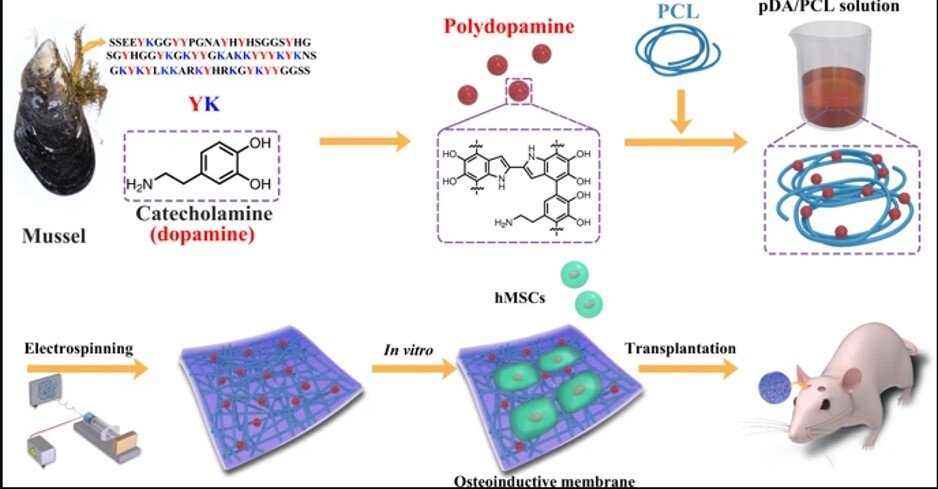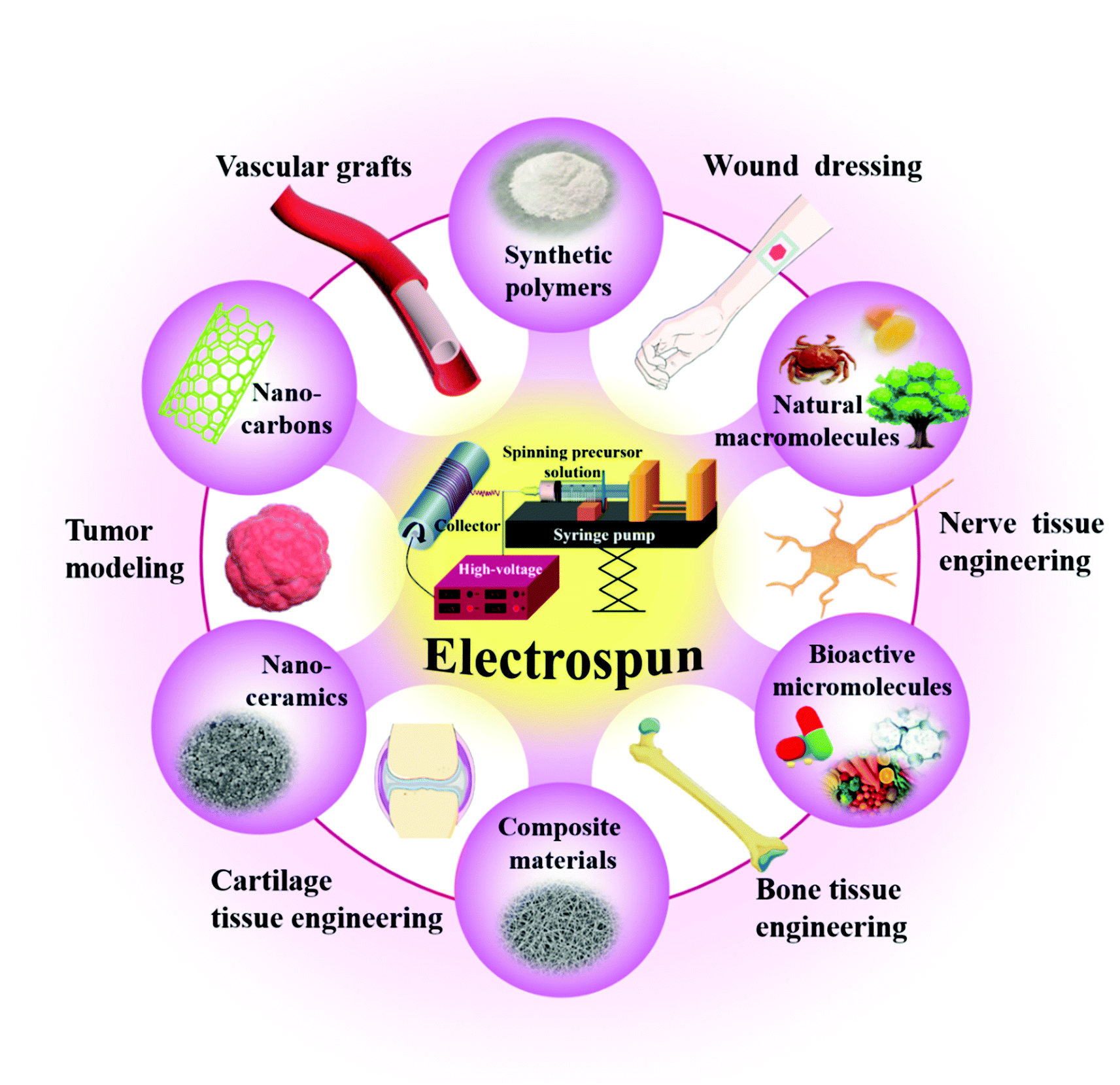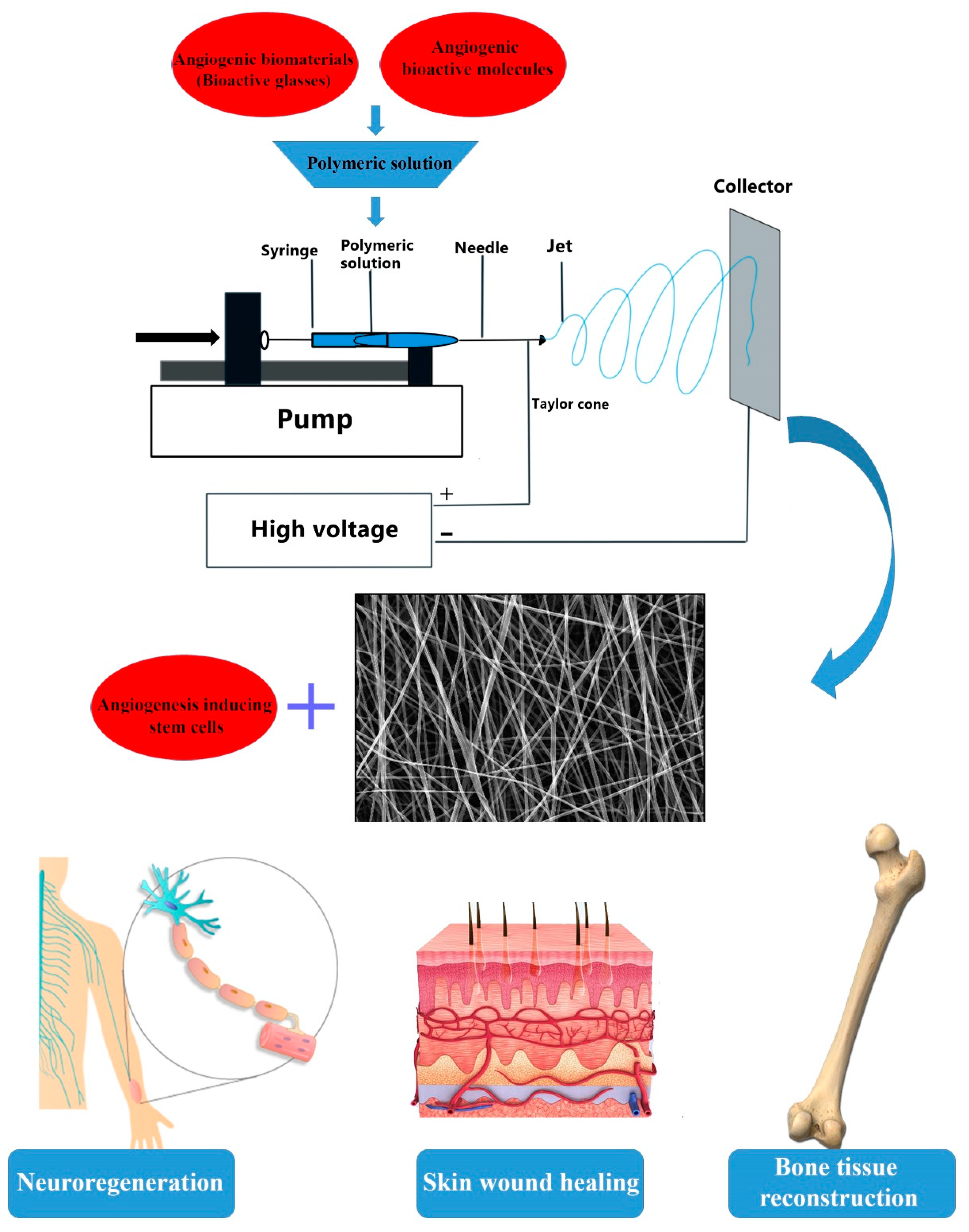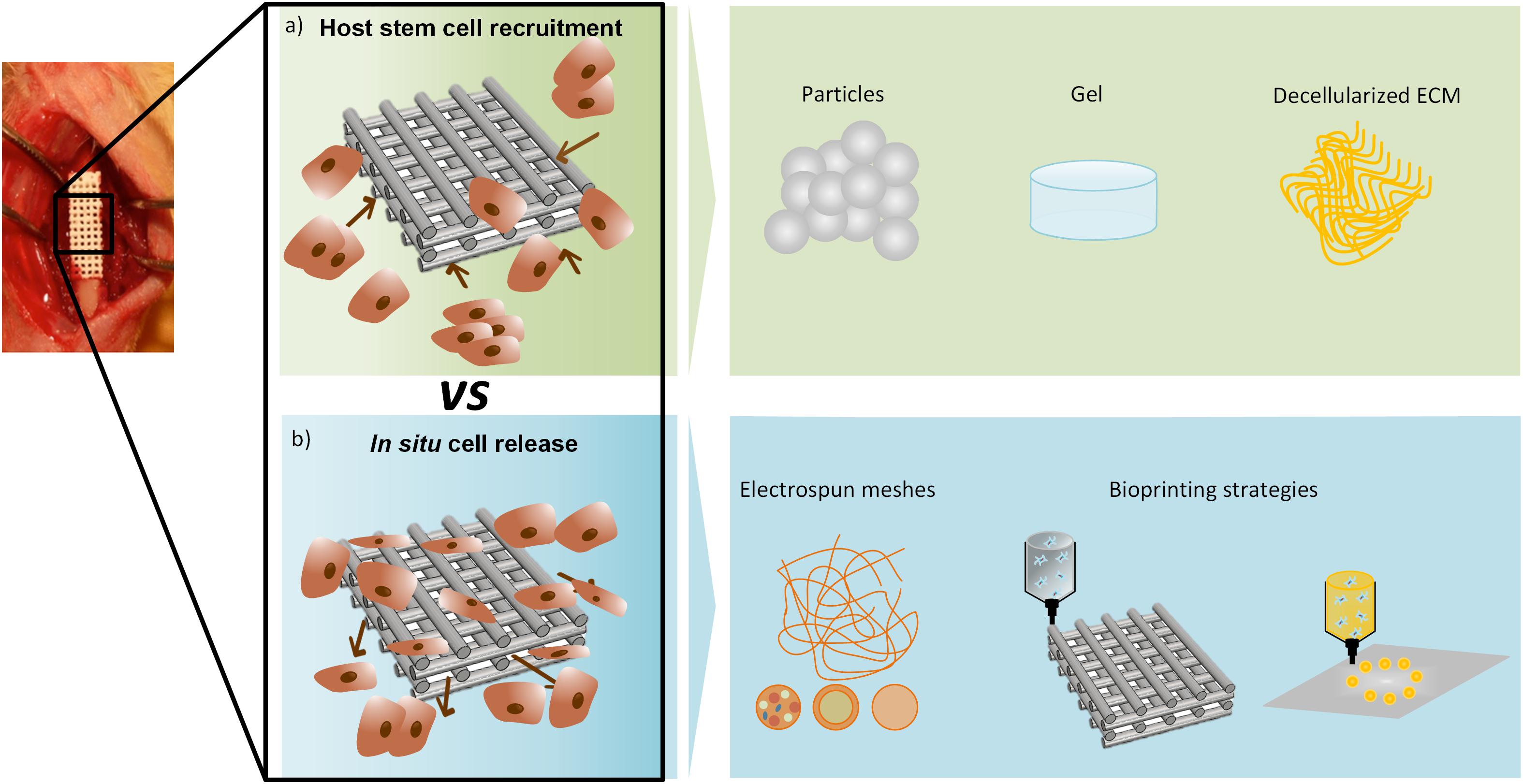Wound healing is a complex process of replacing devitalized cellular structures and tissues with healthy cells and tissue. About this journal.

Bone Tissue Engineering Nano Glue Polymer Membranes For Robust Bone Regeneration

Tissue Engineering Use Of Electrospinning Technique For Recreating Physiological Functions Sciencedirect

Electrospun Nanofibers For Tissue Engineering With Drug Loading And Release Pharma Excipients
Nanotechnology has been increasingly proposed as a novel platform to treat wounds and skin regeneration.

Electrospinning for tissue regeneration. Metal ions play an important role in the ordinary processes of the human body including maintaining life functions regulating metabolism and promoting tissue repair Many metal ions such as Cu 2 Ca 2 and Ag 2 can promote bone regeneration by balancing the function of osteoblasts and osteoclasts Zinc ions can repair damaged skin by promoting extracellular matrix ECM. New opportunities for tissue regeneration and biomaterial. Its name was later changed to Nature.
Etc and regeneration of tissues or organs. Electrospinning Fabrication Methods to Incorporate Laminin in. The aim of Current Drug Delivery aims to publish peer-reviewed articles research articles short and in-depth reviews and drug clinical trials studies in the rapidly developing field of drug delivery.
The International Journal of Artificial Organs IJAO publishes peer-reviewed research and clinical experimental and theoretical contributions to the field of artificial bioartificial and tissue-engineered organs. Chemical Society Reviews 453. The Tissue Engineering Regenerative Medicine seeks to provide a platform for the advancement and dissemination of research and technologies.
2021 and helped to preserve the complexity of the natural ECM thus demonstrating the potential for tissue regeneration and special biological functions. The aim of this study. Electrospinning is a fiber production method which uses electric force to draw charged threads of polymer solutions or polymer melts up to fiber diameters in the order of some hundred nanometers.
Ju XJ Chu LY. Tissue engineering is a biomedical engineering discipline that uses a combination of cells engineering materials methods and suitable biochemical and physicochemical factors to restore maintain improve or replace different types of biological tissues. Self-harm - A proposed mixed methods study will appeal to candidates keen to work with a large data set it utilises data from the Belfast Youth Development Study BYDS to advance public health knowledge on self-harm among young peopleThe Belfast Youth Development Study BYDS is a longitudinal cohort study involving over 4000 young people in.
0971-4871 from 1994 to 2001. Tissue engineering combines the principles of materials and cell transplantation to develop substitute tissues andor promote endogenous regeneration. Discover our types of bioprinters to design and develop personalized dosage form for tailored therapeutic treatment tissue models for regenerative medicine and skin model for drug screening.
After 24 h resazurin assay 47 was. Nanoclay membranes were fabricated by an electrospinning device at a total voltage of 15 kV and a. The journal Nature Environment and Pollution Technology is a quarterly scientific research journal devoted to broader aspects of the environment and published in March June September and December in a year.
Electrospinning is an economic and a simple method employed to produce nanofibers. In large skin wounds to achieve efficient tissue regeneration and functional recovery it is necessary to build scaffolds with precise tissue details of natural skin especially the hair follicles and sweat glands. Tissue engineering often involves the use of cells placed on tissue scaffolds in the formation of new viable tissue for a medical purpose.
The mission of the IJAO is to foster the development and optimization of artificial bioartificial and tissue-engineered organs for implantation or use in. It was initially published with the title of Journal of Environment Pollution ISSN. Electrospinning shares characteristics of both electrospraying and conventional solution dry spinning of fibers.
After placing the sample into the tissue culture plate Costar-3548 cells were seeded and maintained on the sample at a concentration of 10000 cellsmL. The process does not require the use of coagulation chemistry or high temperatures to. Recently tissue-specific meniscal dECM me-dECM bio-inks based on 3D cell printing were designed by Chae et al.
The knee joint contains the meniscus structure comprised of both a medial and a lateral component situated between the corresponding femoral condyle and tibial plateau Figure 1 Each is a glossy-white complex tissue comprised of cells specialized extracellular matrix ECM molecules and region-specific innervation and vascularization. Society members are required to provide a member code which members can obtain by emailing the Society. Electrospinning is a versatile and relatively economic technique which enables easy fabrication of fibrous mats.
With the rapid evolution of electrospun fibers it has been applied in various fields as a novel and practical technology due to distinctive. SCI 收录论文 1 Liu Z Wang W Xie R. For example electrospinning a polymer solution with a highly volatile solvent can generate pores both on the surface and in the bulk of each individual nanofiber.
With the first issue dating back to 2004 this journal promotes. Modern drug research aims to build delivery properties of a drug at the design phase however in many cases this idea cannot be met and the development of delivery systems becomes as important. Biomaterials Research is the official journal of the Korean Society for BioMaterials KSBMLearn more about the society.
382 Panels A and B of Figure 21 show typical SEM images of the surface and core of highly porous PLA nanofibers which were produced by electrospinning a 121 wt PLA solution in dichloromethane. The approach was initially conceived to address the critical gap between the growing number of patients on the waiting list for organ transplantation due to end-stage failure and the limited number of donated organs available for such procedures. 383 With the use of a highly.
Electrospinning is a straightforward and versatile technique to fabricate ultrafine continuous polymer fibers into different morphologies ranging from nanometers to micrometers by applying an appropriate electric field on the viscose polymeric fluid. For members of the Society the cost of the article-processing charge for Biomaterials Research is covered by the Society and no further charge is payable. 2016Stimuli-responsive smart gating membranes.
Open to PhD applications in the field of. Bone Regeneration In article number 2101195 Chaojing Li Fujun Wang Zhimou Yang Lu Wang and co-workers construct a hierarchical nanostructured electrospun membrane with a periosteum-mimic microenvironmentAs a periosteum functional substitute covering the surface of bone defects it can continuously provide growth factors recruit osteoblasts causing subsequent extracellular matrix.

Nanomaterials Free Full Text Electrospun Nanofibers For Improved Angiogenesis Promises For Tissue Engineering Applications

The Role Of Electrospun Fiber Scaffolds In Stem Cell Therapy For Skin Tissue Regeneration Hapres An Academic Publisher
2
Preparation And Study Of Starch Collagen Polycaprolactone Nanofiber Scaffolds For Bone Tissue Engineering Using Electrospinning Technique

Frontiers In Situ Enabling Approaches For Tissue Regeneration Current Challenges And New Developments Bioengineering And Biotechnology

Electrospinning Of Silk Fibroin Based Nanofibers And Their Applications In Tissue Engineering Sciencedirect

Progress In Electrospun Composite Nanofibers Composition Performance And Applications For Tissue Engineering Journal Of Materials Chemistry B Rsc Publishing Doi 10 1039 C9tb01730e

Electrospinning For Tissue Regeneration 1st Edition
